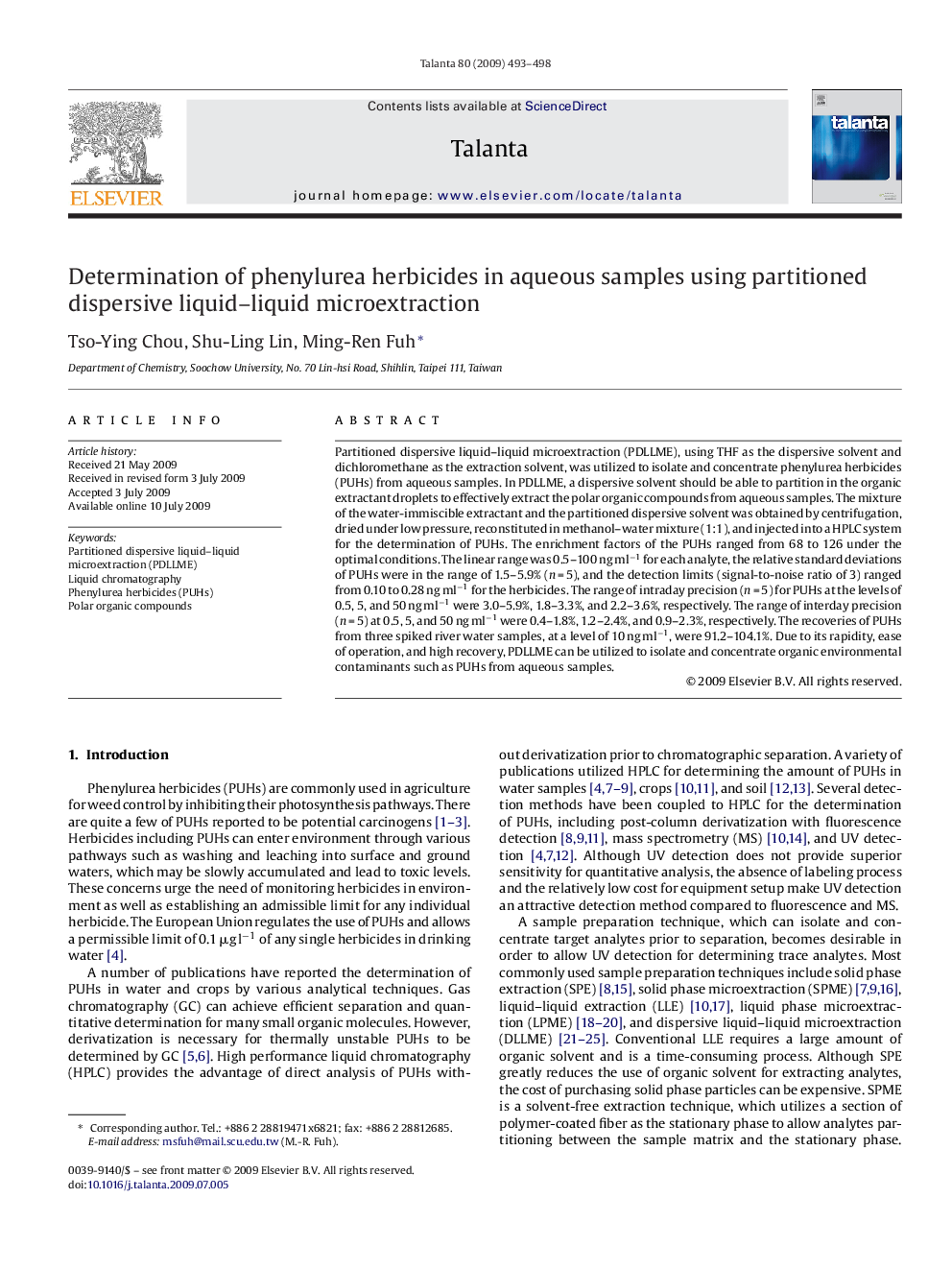| Article ID | Journal | Published Year | Pages | File Type |
|---|---|---|---|---|
| 1246719 | Talanta | 2009 | 6 Pages |
Partitioned dispersive liquid–liquid microextraction (PDLLME), using THF as the dispersive solvent and dichloromethane as the extraction solvent, was utilized to isolate and concentrate phenylurea herbicides (PUHs) from aqueous samples. In PDLLME, a dispersive solvent should be able to partition in the organic extractant droplets to effectively extract the polar organic compounds from aqueous samples. The mixture of the water-immiscible extractant and the partitioned dispersive solvent was obtained by centrifugation, dried under low pressure, reconstituted in methanol–water mixture (1:1), and injected into a HPLC system for the determination of PUHs. The enrichment factors of the PUHs ranged from 68 to 126 under the optimal conditions. The linear range was 0.5–100 ng ml−1 for each analyte, the relative standard deviations of PUHs were in the range of 1.5–5.9% (n = 5), and the detection limits (signal-to-noise ratio of 3) ranged from 0.10 to 0.28 ng ml−1 for the herbicides. The range of intraday precision (n = 5) for PUHs at the levels of 0.5, 5, and 50 ng ml−1 were 3.0–5.9%, 1.8–3.3%, and 2.2–3.6%, respectively. The range of interday precision (n = 5) at 0.5, 5, and 50 ng ml−1 were 0.4–1.8%, 1.2–2.4%, and 0.9–2.3%, respectively. The recoveries of PUHs from three spiked river water samples, at a level of 10 ng ml−1, were 91.2–104.1%. Due to its rapidity, ease of operation, and high recovery, PDLLME can be utilized to isolate and concentrate organic environmental contaminants such as PUHs from aqueous samples.
